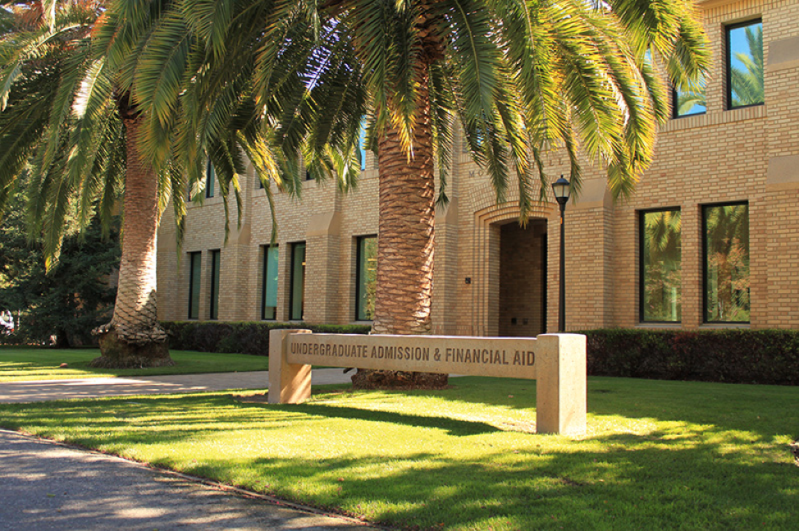Stanford’s new guidelines for the 2020-21 school year, in which undergraduates will complete one or more quarters remotely and up to two quarters on campus, have drastically altered the traditional college experience.
These new restrictions have pushed a good number of frosh to take a gap year to salvage what they had imagined an on-campus school year to be. Stanford does not issue enrollment data until the fall, according to University spokesperson E.J. Miranda; however, students noted that due to numerous factors such as travel restrictions, financial issues, social distancing and remote learning, there is a high probability that the deferral rates have increased from past years.
Mena Hassan ’25, admitted to Stanford in the Restrictive Early Action round this past December, is one student who has chosen to defer instead of abiding by her initial plan to attend her dream school this fall.
“I would rather delay by one year and have a more social, more interactive, more in-person freshman experience than an online one,” Hassan said.
Hassan joins a growing group of students at Stanford and across the country who have opted to take a gap year after COVID-19 radically altered schools’ plans for next year.
Stanford is known for its rigorous academics, but many students feel that much of what makes the college experience can’t be replicated over Zoom. Gap year student Aadit Palicha ’25 sought advice from older students at Stanford when making his decision, and said that many emphasized that Stanford’s academics are “only like 30%” of the actual Stanford experience.
“The other 70% of it really is the people you meet, the connections you make, and the professors you get to talk to,” Palicha said.
Stanford has released protocols for the 2020-21 year that include postponing or limiting the size of large events, mandatory social distancing and mask wearing, private sleeping spaces for each student and a request that students not travel outside the local area while enrolled. These regulations mean that game days, parties, school wide events, dining halls and athletic facilities will be either prohibited or altered to fit social distancing regulations. All of these factors are what Palicha calls “the other 70%.”
Stanford has said that it is working to make the online educational experience “as engaging and enriching as possible.” However, some students still have doubts about online college.
Hanmin Lee ’25, an international gap year student living in Korea, said he felt that his last semester of online high school gave him a negative impression of what his freshman year could be like.
“When I was on the fence I would remind myself what my online experience was like for my high school,” Lee said. “I would think, yeah, I don’t want to do this.”
International visa regulations have further complicated students’ gap year considerations. Closed U.S embassies and suspended visa and passport services have affected students like Palicha, who would not be able to receive his visa in time for fall quarter, so to avoid an entire year online he has decided to defer.
Students said that while the idea of taking a gap year may not have even been a consideration for many students before the pandemic, deferral has become more normalized and understood amid the current state of the world.
Palicha, who comes from a traditional Indian school, said he is probably the first student in his entire high school’s history to take a gap year.
“The idea of a gap year is culturally a taboo,” Palicha said, “It’s associated with lazy hippies and things like that.”
Lee said that before the COVID-19 crisis he could never imagine taking a gap year and that before convincing them, his parents believed that there was a stigma associated with taking a gap year. Now his parents have encouraged him to take a year off.
“[They were] worried about my safety and that we are paying all this money to not get that fulfilling of an education,” Lee said.
What students ultimately plan to do during this gap year is still wide-ranging, even with distancing restrictions. Sandi Khine ’25, from Arcadia, California, said that she does not have a concrete plan for her gap year; however, she said she is “looking forward to the increased independence and free time to explore different things.”
Some students like Palicha are interning and developing startups, while others like Lee are using this time to further explore their major before declaring at Stanford.
Students who are deferring still have major anxieties about what they will be doing in their year and what they will be missing. Lee said his two biggest concerns with taking a gap year are being unproductive and feeling lonely. On the other hand, Palicha said, “I think I would have had FOMO if I didn’t take a gap year, especially if I did fall quarter online. I would be like gosh this sucks, I could have just waited and had a proper experience. I think there is FOMO either way.”
“Honestly after I submitted my gap year form, It’s only been affirmed that I’ve made the right choice,” Lee said.” In that sense I’m pretty confident I made the right decision.”
This article has been corrected to reflect that undergraduates are invited to live on campus for up to two quarters in the upcoming academic year. A previous version of the article incorrectly stated that students would spend one quarter in campus housing and two quarters enrolled remotely. The Daily regrets this error.
Contact Jesse Perlmutter at jesseperl24 ‘at’ gmail.com.
